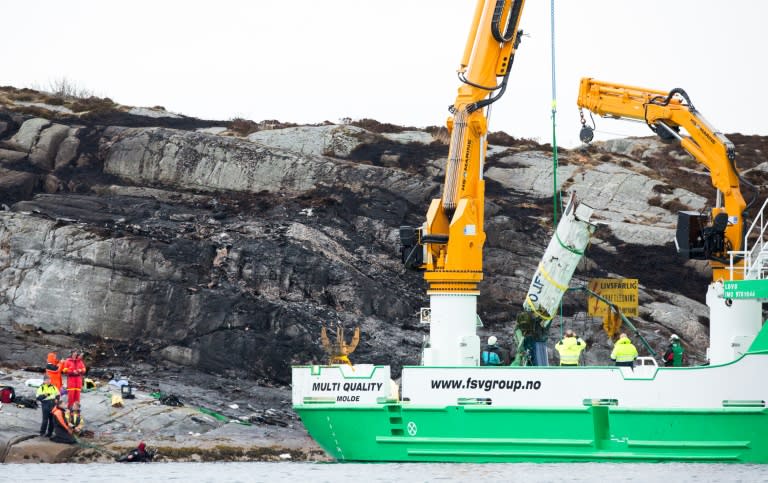Super Puma helicopters grounded in Europe after Norway crash

Europe's air safety agency EASA on Thursday grounded Airbus Super Puma helicopters after one crashed off the coast of Norway in April, apparently due to technical reasons, killing all 13 on board. "Following a report by the Norwegian accident investigators on 1 June 2016, EASA has decided to prohibit all flights by the Airbus Helicopters H225 LP and AS332 L2 helicopters as a precautionary measure and until further information is available," the EASA said in a statement. Although investigations are continuing, Norwegian investigators said the week following the April 29 crash they believe the crash was due to a technical failure. The EASA also ordered inspections of the suspension of the main gear box and it attachments, which apparently let the main rotor detach. The workhorse of the offshore oil industry, the Super Puma that crashed off the Norwegian city of Bergen was transporting oil rig workers -- 11 Norwegians, one British national and one Italian. Commercial flights of the helicopter were banned in Norway as well as in Britain, where older model Super Pumas have been involved in several accidents in the British oil sector, some of them deadly. The most serious dates back to 2009 when a helicopter crashed off of Scotland, killing its 16 occupants after its rotor detached. After the April crash Airbus issued new instructions for the correct installation of the gear box equipment. Thursday's order from the EASA takes the helicopters out of service to perform the necessary repairs and conduct additional inspections. After the repairs, the helicopters are to be reinspected after a certain number of flight hours and to readjust fittings. Some 179 model H225 LP helicopters, like the one that crashed off Bergen, are in service according to Airbus Helicopters.


